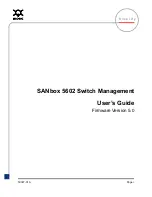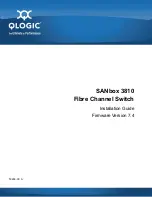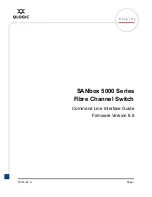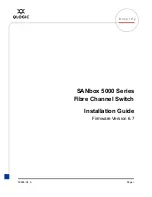
OSPF Configuration
249
Intra-area and inter-area routes describe the internal AS topology whereas the
external routes describes how to select the route to the destinations beyond the AS.
The external type-1 routes refer to imported IGP routes (such as static route and RIP).
Since these routes are more reliable, the calculated cost of the external routes is the
same as the cost of routes within the AS. Also, this route cost and the route cost of
the OSPF itself are comparable. That is, the cost to reach the external route type 1
equals the cost to reach the corresponding ASBR from the local router plus the cost to
reach the destination address of the route from the ASBR
The external routes type-2 refer to the imported EGP routes. Since these routes
typically have higher cost, OSPF assumes that the cost from the ASBR to reach the
destinations beyond the AS is higher than the cost from within the AS to ASBR. So in
route cost calculation, the cost from the ASBR to the destination is considered and the
cost between the router and the ASBR is ignored. If the cost from the router to the
ASBR and the cost from the ASBR to the destination are of the same size, then the
cost of the router to the ASBR will also be included.
Perform the following configuration in OSPF View.
By default, OSPF does not import the routing information of other protocols. The
default type of the imported route is 2, cost is 1 and the tag is 1.
The
protocol
variable specifies a source routing protocol that can be imported. This
can be Direct, Static or RIP.
3Com recommends that you configure the route
type
,
cost
and
tag
together in
one command. If you do not, note that a new configuration overwrites the previous
configuration.
Configuring Parameters for OSPF to Import External routes
When the OSPF imports the routing information discovered by other routing protocols
in the autonomous system, some additional parameters need to be configured, such
as default route cost and default tag of route distribution. Route ID can be used to
identify the protocol-related information.
Perform the following configuration in OSPF View.
Table 241
Configuring OSPF to Import Routes of Other Protocols
Operation
Command
Configure OSPF to import routes of
other protocols
import-route protocol
[
cost
value
|
type
value
|
tag
value
|
route-policy
route_policy_name
]*
Cancel importing routing
information of other protocols
undo import-route protocol
Table 242
Configuring Parameters for OSPF to Import External routes
Operation
Command
Configure the minimum interval for OSPF to import the
external routes
default interval
seconds
Restore the default value of the minimum interval for OSPF
to import the external routes
undo default interval
Configure the upper limit to the routes that OSPF import
each time
default limit
routes
Summary of Contents for 5500 SI - Switch - Stackable
Page 24: ...24 ABOUT THIS GUIDE...
Page 50: ...50 CHAPTER 1 GETTING STARTED...
Page 54: ...54 CHAPTER 2 ADDRESS MANAGEMENT CONFIGURATION...
Page 78: ...78 CHAPTER 3 PORT OPERATION...
Page 88: ...88 CHAPTER 4 XRN CONFIGURATION...
Page 122: ...122 CHAPTER 8 VLAN VPN CONFIGURATION...
Page 216: ...216 CHAPTER 15 SSH TERMINAL SERVICES...
Page 268: ...268 CHAPTER 16 IP ROUTING PROTOCOL OPERATION...
Page 308: ...308 CHAPTER 17 NETWORK PROTOCOL OPERATION...
Page 349: ...349...
Page 350: ...350 CHAPTER 18 MULTICAST PROTOCOL...
Page 522: ...522 CHAPTER 22 FILE SYSTEM MANAGEMENT...
Page 584: ...584 CHAPTER 30 PASSWORD CONTROL CONFIGURATION OPERATIONS...
Page 600: ...600 CHAPTER 31 MSDP CONFIGURATION...
Page 614: ...614 CHAPTER 32 CLUSTERING...
Page 670: ...670 CHAPTER C AUTHENTICATING THE SWITCH 5500 WITH CISCO SECURE ACS...
















































